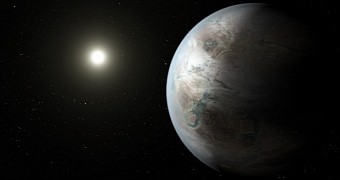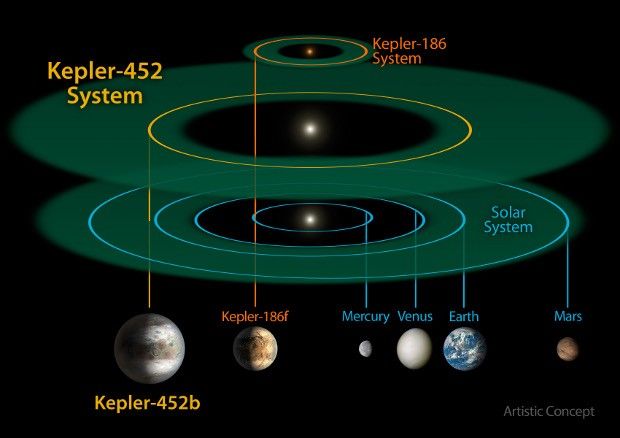Our good old planet has so far done a pretty good job sustaining life. So, naturally, scientists hoping to find extraterrestrial beings, be they microscopic organisms or nasty-looking beasts, are keeping an eye open for Earth-like foreign celestial bodies.
Well, it just so happens that, with the help of NASA's Kepler space observatory, launched in March 2009, one such Earth-like planet was spotted orbiting a star located at a distance of merely 1,400 light-years from our Solar System.
The star in question is called Kepler 452. Like the Sun, it is a G2-type star. Its color is white to yellow and its surface temperature is one of 5,000 to 6,000 degrees Kelvin (around 4,800 to 5,800 degrees Celsius / 8,500 to 10,400 degrees Fahrenheit).
As for its age, astronomers estimate that Kepler 452 came into being about 6 billion years ago. This makes it about as old as the Sun, said to have formed 4.6 billion years back. Interestingly, Kepler 452 is also similar in size to our parent star.
The new planet might just be Earth 2.0
The Earth 2.0 candidate that the Kepler space observatory found orbiting Kepler 452, named Kepler 452b, is believed to be about 1.6 times the size of our planet. Its orbit, estimated to be one of 384.84 Earth days, puts it in the habitable zone of its star.
Thus, astronomers say that, although it sits about 5% farther away from Kepler 452 than Earth from the Sun, it is nonetheless close enough to its parent star for liquid water to form on its surface. Besides, its size and its location in the Kepler 452 system hint that it is a rocky world.
True, another Earth analogue, i.e. Kepler 186f, was identified only last year some 500 light-years away. Still, since this other planet orbits a red dwarf star considerably smaller and cooler than the Sun, it's the newly discovered Kepler 452b that is the best guess for finding alien life.
“The Kepler exoplanet explorer has discovered a planet and star which most closely resemble the Earth and our Sun,” said NASA researcher John Grunsfeld. “We can think of Kepler 452b as an older, bigger cousin to Earth,” added scientist Jon Jenkins.
The quest for alien life is far from over
Mind you, the fact that Kepler 452b very much resembles Earth and its parent star is not very different from our Sun does not necessarily mean that the orb hides alien lifeforms. It just means that, at least for now, this orb is our best shot to find extraterrestrial creatures.
“It’s awe-inspiring to consider that this planet has spent 6 billion years in the habitable zone of its star; longer than Earth. That’s substantial opportunity for life to arise, should all the necessary ingredients and conditions for life exist on this planet,” researcher Jon Jenkins said in an interview.

 14 DAY TRIAL //
14 DAY TRIAL // 

